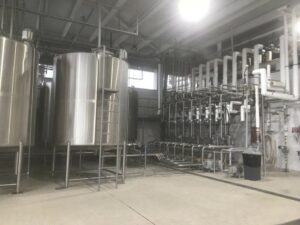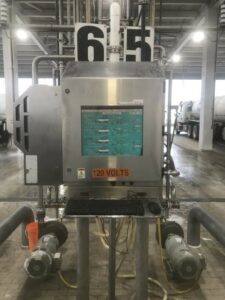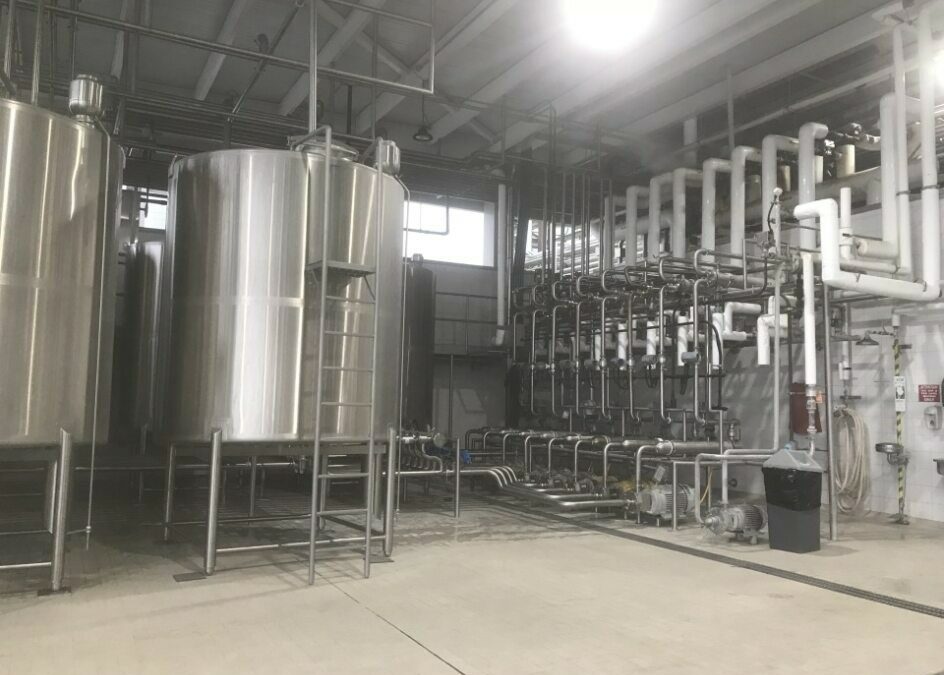The recent events related to foodborne illnesses, particularly in the dairy industry, have prompted the recall of numerous products. This situation has left many consumers questioning the hygiene and product quality measures that companies employ to prevent such outbreaks. Consequently, it is crucial for food and beverage processing plants to implement strict cleanliness and sanitation procedures. These measures ensure the safety of products and protect consumers. A single subpar product can lead to legal issues, damage a company’s reputation, and affect brand trust and loyalty.

Clean-in-Place systems keep equipment contaminant-free.
Clean-in-Place (CIP) Systems play a vital role in the dairy industry due to the susceptibility of milk and other dairy products to spoilage and bacterial growth. The CIP method allows for efficient and thorough cleaning of equipment and its components without the need for disassembly.
Let’s explore how Clean-in-Place procedures benefit your company in the short and long term
- Hygiene and Product Quality:
- Contaminants within a facility can compromise product safety and quality. CIP ensures that equipment surfaces remain free from contaminants.
- Consistent Product Quality:
- Proper cleaning in processing facilities ensures uniform product characteristics. Each batch meets desired standards, emphasizing consistency.
- Minimized Production Downtime:
- Regular CIP practices reduce the time equipment is offline for cleaning. Faster turnaround between production runs translates to increased efficiency. As we all know, time is money.
- Reduced Maintenance Cost and Extended Equipment Lifespan:
- Effective cleaning prevents buildup and corrosion, resulting in fewer repairs and replacements for equipment.
- Food Safety Compliance and Brand Protection:
- Compliance with industry regulations prevents legal penalties. Avoiding controversies ensures higher consumer trust and better brand reputation.
- Experience Accelerates Development:
- Our engineers, with decades of experience in the food and beverage industry, efficiently develop CIP systems. Familiarity with the best practices leads to faster project implementation, saving valuable time. Again, time is money.
Clean-in-Place systems are essential for maintaining product quality, preventing contamination, and ensuring consumer safety. A well-implemented CIP system contributes to product integrity and brand trust.

We prioritize seamless integration and functionality.
We recently worked with one of California’s largest dairy processors in the construction of 3 control panels that would allow them to effectively implement a Clean-in-Place system. Our customer expressed dissatisfaction with their existing system and our in-house engineers created detailed schematics that met their desired requirements, accompanied with seamless integration and functionality.
The development process was as follows:
- Control Panel Development:
- 1 for the Programmable Logic Controller (PLC).
- 1 for solenoid actuated valve panel with 48 solenoids.
- 1 for Supervisory Control and Data Acquisition (SCADA) user-interface control station.
- SCADA User-Interface Development.
- Create an intuitive SCADA User-Interface that aligns with customer specifications, for process control and data acquisition.
- Quality Assurance (QA) and Quality Control (QC) Testing:
- Rigorous QA/QC requirements meant multiple design revisions.
- Control Panel Build Testing:
- Visual Inspection to verify that build meets standards and matches schematics.
- Cold Point-to-Pont Test to ensure proper circuit continuity.
- Hot test to confirm correct voltage supply on all panel points.
- Firmware and Parameter Updates.
- Digital and Analog Input/Output Testing.
- Communication Path Verification.
- Test PLC and SCADA programs to validate functionality.
- Physical Selector Switch Testing for manual control.
- Any design changes made during QA/QC are meticulously documented and reflected in updated schematics.
- Integration into Existing System & On-site Commissioning.
- Seamlessly incorporate new process controls into the existing setup while ensuring compatibility and smooth transitions.
- Practical testing steps mirror those during control panel build testing & that system meets customer requirements.
Results:
- Customer Satisfaction.
- Rigorous testing ensured that system was clean and contamination-free to meet and exceed industry standards.
- Standardized User Interface.
- The intuitive and consistent interface is easy for operators to understand and make informed decisions.
- Recipe-Based Program with Proportional, Integral, and Derivative (PID) Controllers.
- PID controllers are used for precise control, ensure optimal performance, and the highest level of customer satisfaction.
If this sounds like something you would like to implement, contact us to discuss how we can tailor it to your specific requirements.

